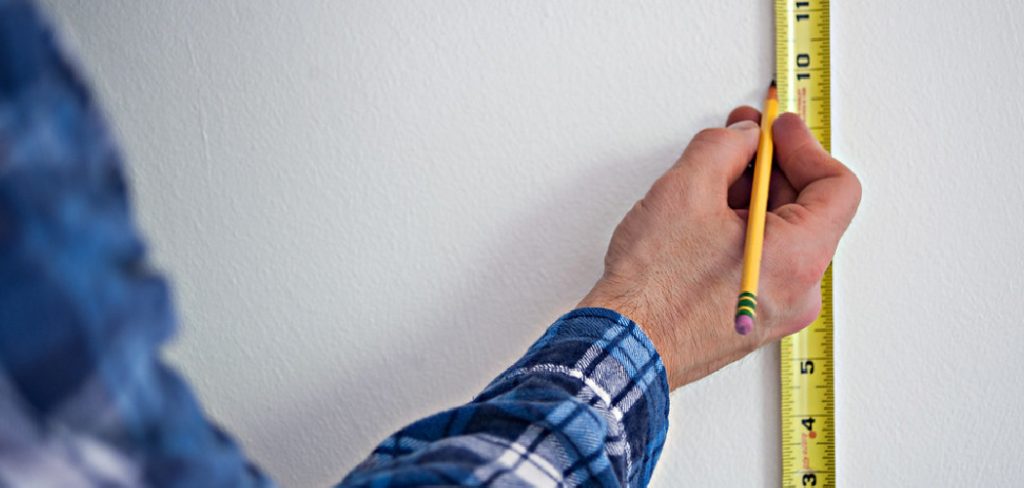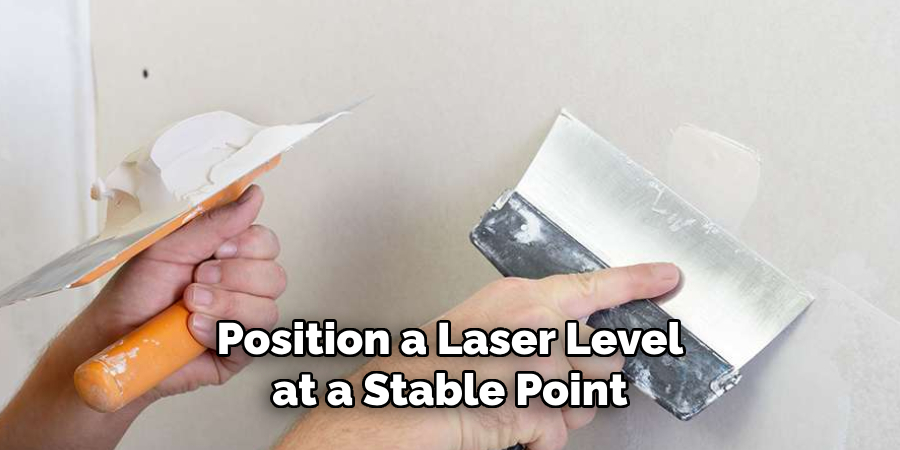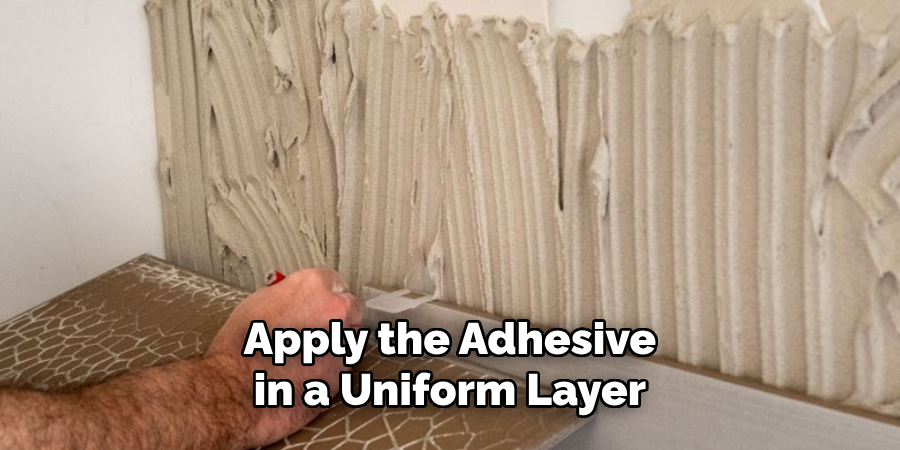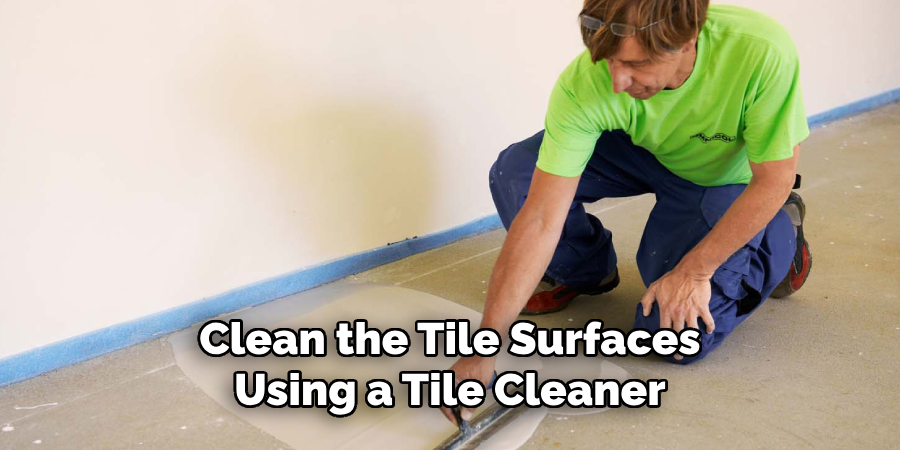Are you planning to start a tiling project but want to know how to level the wall before beginning? Don’t worry. We’ve got you covered!
How to level a wall before tiling can significantly enhance the aesthetic appeal and functionality of a space, but achieving a professional finish requires a properly leveled surface. Uneven walls can lead to misaligned tiles, adhesive failures, and an uneven appearance, undermining your efforts. Therefore, understanding the process of leveling a wall before tiling is crucial for DIY enthusiasts and professionals.

In this guide, we will walk you through the essential steps and tools to ensure your wall is perfectly prepared, setting the foundation for a flawless tiling job. From identifying problem areas to applying the right materials, leveling your wall is the first step to achieving a professional and lasting tiling project.
What Will You Need?
Before diving into the steps, let’s gather all the necessary tools and materials to level a wall before tiling. These include:
- Spirit level
- Laser level (optional)
- Tape measure
- Chalk line
- Sandpaper or sander
- Patching compound or joint compound
- Trowel
- Primer
- Protective gear (gloves, goggles, mask)
Ensure all these items are on hand, as they are essential for achieving a successful leveling job. Now, let’s move on to the next steps.
10 Easy Steps on How to Level a Wall Before Tiling
Step 1: Identify Problem Areas
Begin by assessing your wall for any imperfections that may interfere with tiling. This involves inspecting the entire surface for cracks, bumps, or uneven spots. Utilize a spirit level by placing it horizontally and vertically along different wall sections. The spirit level will help you identify crooked areas, as the bubble indicator will move away from the center.

Position a laser level at a stable point and scan the wall to project horizontal and vertical lines, highlighting any protrusions or indentations. Mark the identified problem areas with a chalk line for easy reference. Additionally, pay attention to corners and edges, as these are common places for discrepancies.
Step 2: Clean the Wall Surface
Before beginning any leveling, ensure the wall surface is clean and free from debris or loose paint that could interfere with the application of patching materials. Use a dry brush or vacuum to remove dust and dirt from the wall’s surface. For stubborn grease or grime, lightly scrub the area with a damp sponge and mild detergent, then allow it to dry completely. A clean surface ensures the patching or joint compound adheres correctly, providing a reliable base for smooth, even tiling.
Step 3: Patch Cracks and Holes
After identifying and cleaning, it’s time to patch any cracks or holes in the wall. Use a patching compound or joint compound to fill in crevices, ensuring the surface becomes as smooth as possible. Apply the compound with a trowel, pressing it firmly into cracks and spreading it across the surface in a thin, even layer. Pay special attention to larger holes, filling them in gradually by applying multiple layers if necessary. Allow each layer to dry according to the manufacturer’s instructions before applying the next. Once patched areas are arid, sand them gently with sandpaper or a sander to achieve a seamless finish.
Step 4: Sand the Wall Smooth
With all cracks and holes patched and dried, the next step is to sand the wall to ensure a smooth and even surface. Use sandpaper or an electric sander to gently sand down any raised areas or uneven spots. Start with a coarse grit to tackle rougher sections, then progress to a finer grit for a polished finish. Be sure to sand the entire wall, including the patched areas, to create a uniform surface.

This will help the tiles adhere better and lay flat against the wall. Take time to eliminate any remaining imperfections, checking your progress with a spirit or laser level as needed. Once you achieve a smooth result, wipe away any sanding dust with a damp cloth and let the wall dry before proceeding to the next step.
Step 5: Apply Primer
Once the wall is sanded smooth, the next step is to apply a primer. Priming the wall prepares the surface for better adhesion of the tile adhesive and provides a soft, even base that enhances the durability and longevity of your tiling project. Choose a primer that is suitable for your wall type and the intended tile adhesive. Using a paint roller or brush, apply an even coat of primer across the entire wall, paying close attention to corners and edges. Ensure that the primer covers all patched and sanded areas.
Allow the primer to dry completely according to the manufacturer’s instructions before proceeding to the next stage of your tiling project.
Step 6: Measure and Plan Tile Layout
Before applying any adhesive and starting the tiling process, carefully measure your wall and plan the tile layout. Use a tape measure to determine the height and width of the wall, then calculate how many tiles you will need based on their size. Consider the placement of any decorative features or focal points and account for grout lines when planning your layout. It’s helpful to dry-lay tiles on the floor first or use a chalk line to sketch the layout directly onto the wall.
This will allow you to visualize the arrangement and make necessary adjustments without committing to any placement. A well-thought-out plan will help minimize tile cutting and ensure a symmetrical, visually appealing finish.
Step 7: Mix and Apply Tile Adhesive
Once your tile layout is planned, it’s time to mix and apply the tile adhesive. Follow the manufacturer’s instructions for mixing the adhesive, typically combining the dry mix with water until you achieve a smooth, paste-like consistency. Using a notched trowel, spread the adhesive onto a small section of the wall, starting from the bottom and working your way up. Apply the adhesive in a uniform layer, holding the trowel at a consistent angle to create ridges that will help the tiles bond securely.

Only cover a manageable area you can tile within the adhesive’s workable time, usually around 20-30 minutes. This ensures the adhesive doesn’t dry out before the tiles are set. Once the adhesive is applied, you can start placing the tiles onto the wall according to your planned layout.
Step 8: Lay Tiles
Begin placing the tiles onto the wall, starting at the bottom center and working your way outward and upward according to your planned layout. Press each tile firmly into the adhesive, giving it a slight twist to ensure full contact with the adhesive. Use spacers between each tile to maintain even grout lines and ensure uniform spacing. If necessary, cut tiles to fit around obstacles or at the edges of the wall using a tile cutter or wet saw. Regularly check the alignment with a spirit level to ensure rows remain straight. Continue laying tiles until the entire wall is covered, adjusting as necessary to maintain symmetry and alignment.
Step 9: Grout the Tile Joints
After the tiles have been set and the adhesive has dried completely, the next step is to grout the tile joints. Mix the grout according to the manufacturer’s instructions, ensuring a smooth, consistent paste. Using a rubber grout float, apply the grout diagonally across the tiles to press it into the joints, providing complete and even coverage. Hold the float at a 45-degree angle to effectively force the grout into the gaps between tiles. Work in small sections and remove excess grout from the surface by dragging the float diagonally across the tiles after application.
Once you have filled all joints, allow the grout to set for the time the manufacturer recommends. After the initial set, clean the tile surfaces gently with a damp sponge, using circular motions to remove any grout haze. Finally, allow the grout to cure completely for the duration specified before sealing, if necessary, and completing any finishing touches.
Step 10: Seal the Grout and Clean the Tiles
After the grout has fully cured, it must be sealed to protect against moisture and stains. Choose a high-quality grout sealer compatible with your specific grout type. You are applying the sealer along the grout lines with a small brush or applicator, ensuring complete coverage. Avoid applying sealer to the tile surfaces, as it may cause discoloration. Allow the sealer to penetrate for the recommended time, and then wipe away any excess with a clean, dry cloth. Once the sealer has dried, thoroughly clean the tile surfaces using a tile cleaner, a mild soap solution, and a soft cloth.

By following these ten steps, you can successfully tile a wall and achieve a professional, durable finish that will enhance the appearance and value of any room.
Conclusion
How to level a wall before tiling is an essential step that ensures the longevity and aesthetic appeal of your tiling project.
A well-leveled surface allows for even tile placement and professional-looking results. By accurately assessing the wall and addressing imperfections through sanding, patching, and priming, you create a stable base for the tiles to adhere to. Taking the time to prepare the wall surface meticulously minimizes the risk of tiles shifting or cracking over time, leading to a more durable and visually pleasing finish.
Ultimately, the attention to detail during the leveling process pays dividends in the durability and beauty of the completed tile installation.
